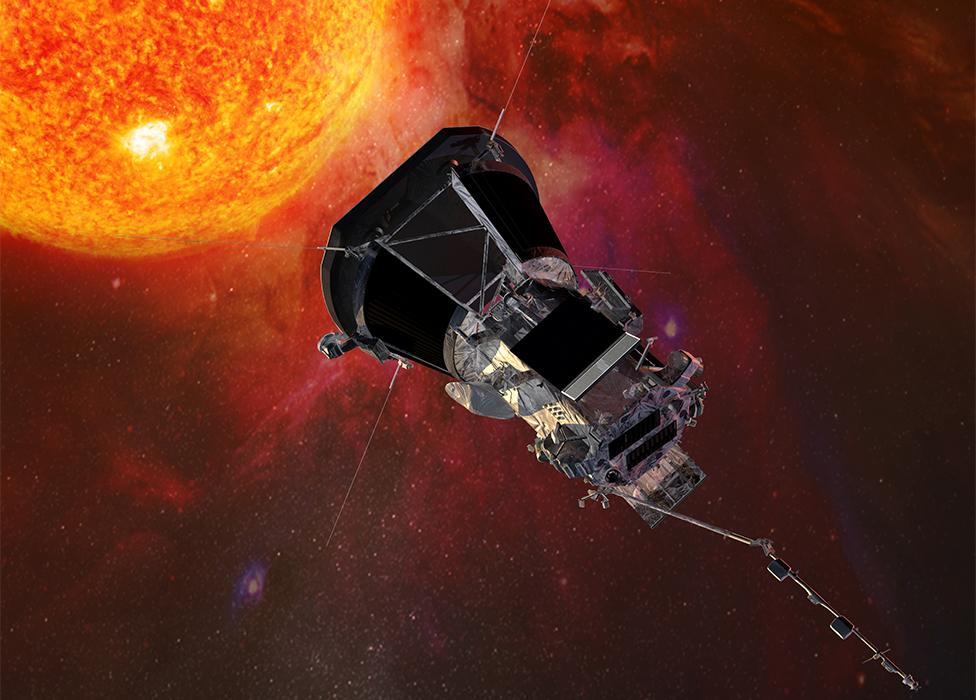Parker Solar Probe: Nasa craft 'touches' the Sun for the first time
- Published
- comments

A Nasa spacecraft has made history - becoming the first craft to "touch" the Sun.
Nasa's Parker Solar Probe flew through the outer atmosphere of our nearest star, in the part of the Sun known as the corona.
The probe had to withstand intense heat and radiation as it plunged through the solar atmosphere, whilst it gathered new data on how the Sun works.
The daring journey took place in April, but scientists have only just been able to confirm it through analysing data sent back to Earth by the probe.
The Sun's corona is the outermost part of the Sun's atmosphere. The corona is usually hidden by the bright light of the Sun's surface. That makes it difficult to see without using special instruments.
Credit: Nasa
WATCH: Martin's got the lowdown on Nasa's hottest mission yet (2018)
Thomas Zurbuchen, who works for the Science Mission team at Nasa said the probe touching the sun is a "monumental moment for solar science and a truly remarkable feat."
"Just as landing on the Moon allowed scientists to understand how it was formed, touching the Sun is a gigantic stride for humanity to help us uncover critical information about our closest star and its influence on the Solar System." added Nicola Fox, the director of Nasa's heliophysics science division.
The corona is only visible to us on Earth during a total solar eclipse
The Parker Solar Probe
The probe was launched three years ago to explore the mysteries of the Sun by travelling closer to it than any other spacecraft.
It moves at enormous speed, at over 320,000 mph (500,000km/h) and uses different instruments to take measurements of the solar environment.
Scientists say data that they get from the probe will help provide a better understanding of how the Sun works.
The probe travels at 320,000 miles per hour
It will also help with everyday life on Earth too. Extreme space weather events can disrupt communications and satellites can be damaged.
Scientists try to forecast and predict these weather events and the Parker Solar Probe means they will gain new and important information to help them do that.
"We look forward to seeing what else the mission discovers as it ventures even closer in the coming years," says Joseph Smith, Parker program executive at Nasa HQ.
The Parker mission will continue until its final orbit in 2025.
- Published11 December 2023
- Published12 August 2018
- Published7 March 2018
